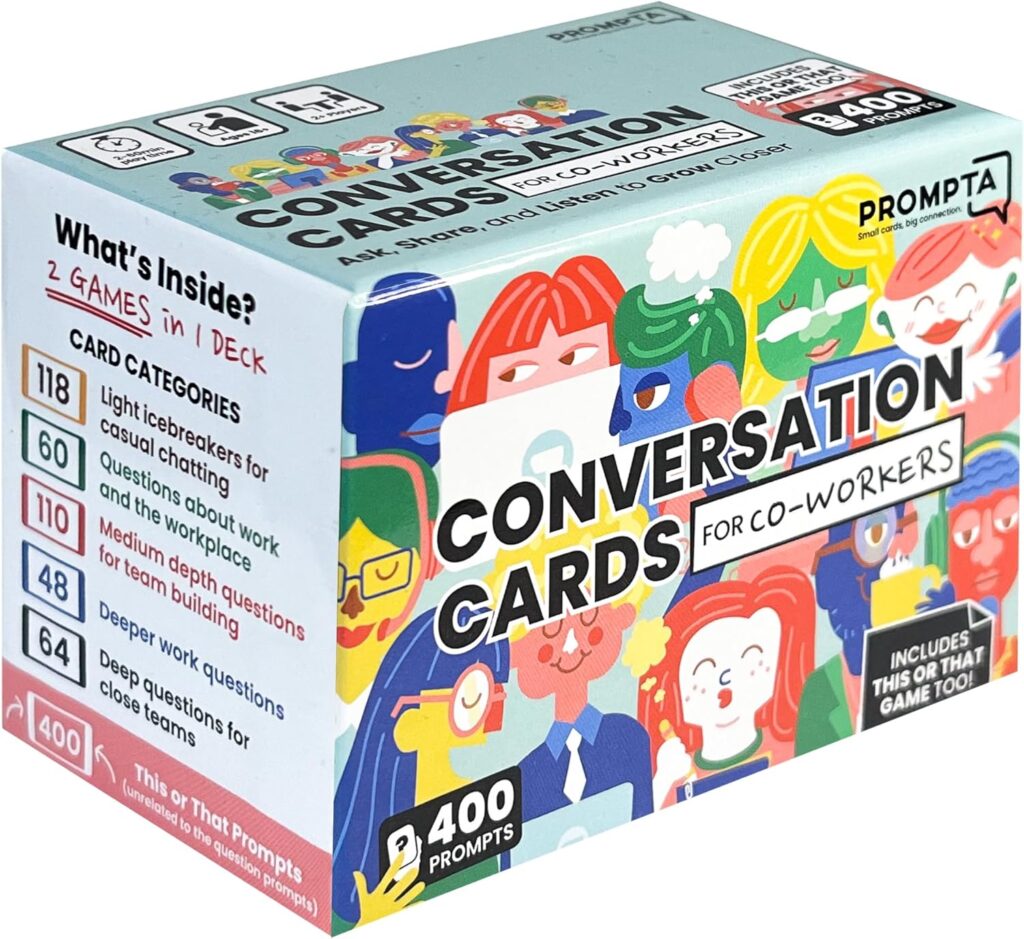5 Ice Breaker Questions That Will Transform
Your Meetings From Awkward to Awesome

Why Ice Breakers Matter in Meetings
Meetings are essential for communication and collaboration, yet they can often feel stiff, unengaging, or even stressful. This is especially true in workplaces where teams are new, remote, or simply haven’t had many opportunities to bond. Ice breakers for meetings help alleviate this tension, fostering a relaxed atmosphere where colleagues can connect and engage more freely.
Research in psychology suggests that when people feel comfortable and connected in a group setting, they are more likely to share ideas, contribute to discussions, and work collaboratively. Ice breaker games for meetings serve as a tool to help team members become familiar with one another, breaking down barriers and promoting an open and communicative environment.
In this article, we’ll explore five engaging ice breaker questions designed to enhance team dynamics, along with insights into how each question contributes to building stronger workplace relationships.
1. “What’s one hobby or interest you have that most of your colleagues might not know about?”
Encouraging team members to share personal interests that aren’t widely known can reveal surprising commonalities and unique talents within the group. This question serves multiple purposes:
Uncovering Hidden Talents: Team members might discover that a colleague is a skilled painter, an amateur chef, or a marathon runner. Such revelations can lead to collaborative opportunities or team-building activities centered around these interests.
Building Empathy and Understanding: Learning about a colleague’s passions provides context about their personality and values, fostering empathy and a deeper appreciation for their perspectives.
Enhancing Engagement: When employees feel known and valued for their whole selves, not just their professional roles, it boosts morale and engagement.
2. “If you could have dinner with any historical figure, who would it be and why?”
This imaginative question prompts team members to reflect on their interests and values, offering a window into their inspirations and thought processes. The benefits include:
Stimulating Intellectual Curiosity: Discussing historical figures can lead to conversations about history, culture, and personal aspirations, enriching the team’s intellectual environment.
Revealing Personal Values: Choices often reflect what individuals admire, such as leadership, creativity, resilience, or innovation, providing insight into their core values.
Encouraging Storytelling: Sharing reasons behind their choices allows team members to tell stories, enhancing communication skills and fostering a narrative culture within the team.
3. “What’s the most memorable travel experience you’ve ever had?”
Travel experiences are rich with stories and lessons that can be both entertaining and enlightening. This question offers several advantages:
Cultural Exchange: Team members can share insights from different cultures, broadening the group’s collective worldview and promoting inclusivity.
Highlighting Problem-Solving Skills: Travel often involves unexpected challenges; discussing how one navigated these situations can showcase adaptability and resourcefulness.
Creating Personal Connections: Sharing travel stories can reveal shared destinations or experiences, strengthening bonds between team members.
4. “What’s one book, movie, or podcast that has significantly influenced you, and why?”
This question delves into the media that shapes individuals’ thoughts and values, offering a platform to discuss impactful content. The benefits include:
Encouraging Continuous Learning: Recommendations can inspire colleagues to explore new content, fostering a culture of continuous learning and development.
Understanding Motivations: The themes and messages that resonate with someone can provide insight into their motivations and guiding principles.
Facilitating Deeper Discussions: Conversations about influential media can lead to in-depth discussions on various topics, enhancing critical thinking and team cohesion.
5. “What’s a goal you have for this year, either personal or professional?”
Discussing goals allows team members to express their aspirations and seek support or accountability from colleagues. This question offers several benefits:
Fostering Supportive Relationships: Knowing each other’s goals enables team members to offer encouragement, resources, or assistance, building a supportive network.
Aligning Objectives: Sharing professional goals can uncover synergies and opportunities for collaboration, aligning individual objectives with team or organizational aims.
Promoting Accountability: Verbalizing goals in a group setting can enhance commitment and accountability, increasing the likelihood of achieving them.
Incorporating these ice breaker questions into your meetings can transform routine gatherings into opportunities for meaningful connection and team building. However, crafting such questions and ensuring they resonate with everyone can be time-consuming. This is where structured tools come into play.
Make Meetings More Engaging with the Right Ice Breaker Game
While these questions are great conversation starters, sometimes you need a structured approach to ensure everyone participates. That’s where the Conversation Cards for Coworkers can be incredibly helpful. This ice breaker for meetings is designed to create meaningful connections in a fun, engaging way.
Why This Ice Breaker Game is Perfect for Meetings
Two Games in One: This set includes 400 open-ended questions and a “This or That” game, making it versatile for different team dynamics.
Five Categories to Match Your Team’s Comfort Level: Choose from light, medium, deep, light work-related, or deep work-related topics to suit your team’s needs.
Compact & Portable: The cards are small enough to keep at your desk or in the breakroom for quick access.
Work-Appropriate & Inclusive: The questions are designed to be engaging without being too personal, ensuring a safe and comfortable space for everyone.
How to Use the Ice Breaker Cards in Meetings
Start Small – If your team isn’t used to ice breakers, begin with light or funny questions to ease into the activity.
Rotate the Questions – Let different team members pick a card at each meeting to keep things fresh.
Encourage Participation – Give everyone a chance to answer, but allow people to pass if they’re not comfortable.
By integrating these conversation starters into your meetings, you create a more engaging and connected workplace. Try using the Conversation Cards for Coworkers and watch as your team bonds, communicates better, and enjoys meetings more than ever before



